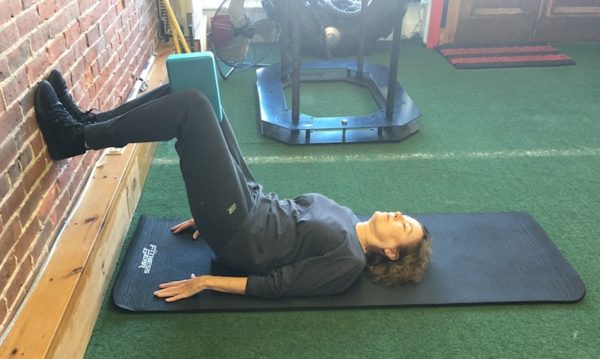My lower right back has been bothering me the last few days. I got out of bed and OUCH. Maybe it was because I had lingered there for a few hours, propped up by pillows and black coffee, working on my laptop. Maybe I turned the wrong way the day before when I finally hauled out the vacuum or during the night when I tried to carve out a space between my husband and our two cats. I don’t know. The odds are it’s nothing serious, but it’s still a pain in the butt. Literally.
This morning I went to the gym for my regular workout with Andy. The day after Thanksgiving, after multiple helpings of nearly everything on the table, is not a good day to cancel, but I almost did. Thankfully, I didn’t. I’ve been going long enough to know the benefits I will reap from getting to the gym — physically and mentally.
And when it comes to back pain, I know I’m far from alone. An estimated 90 percent of adults in the United States will experience low back pain at least once in their lives. It’s the most frequent cause of disability and lost work time and the second most common reason for seeing a doctor. Do you know what’s first? Colds and the flu share that honor.
According to Dr. Daniel Robbins, an orthopaedic surgeon and spine specialist at OA Centers for Orthopaedics, most back problems are caused by:
- Staying in the same position for too long
- Bending and twisting
You can read more of what Dr. Robbins has to say in Tips on how to take good care of your back.
For this blog post, I’m going to share two movements Andy had me do in our session this morning. First was a variation of the bridge exercise I usually do at the start of each workout.
This exercise will help loosen up muscles in your lower back and engage your core a little bit more to create stability. You want to lie on your back and put your feet against a flat surface — 90 degrees at the knees and 90 degrees at the hips. Put something between your knees, it could be a yoga block or an empty soda bottle also works nicely. Lift your hips up off the floor into a bridge position and squeeze your knees together.
In that position and while you squeeze your knees, breathe in and out three times. The tendency for many people is to hold their breath, but when you do that it sends a signal to your brain that everything should stay tight. Controlled breathing sends a different message — that everything can relax.
The second exercise involves a slight leg stretch. Andy had me put my leg up on a block and stretch forward ever so slightly and hold for about a minute. I also did it with my foot turned inward. Three times each position. How you breathe doesn’t really matter with this exercise.
This is more or less of a hamstring stretch. When your hips are tight you might get a little of what they call an anterior pelvic tilt. Basically, your hips rotate forward and it puts a lot of tension on your hamstrings and can make them really tight. Elevating your foot like you’re doing allows you to control your stretch a little bit more. Instead of bending over at the waist you’re pushing back on your hips and hinging. That allows you to get a little bit deeper stretch that loosens up the hamstrings and the hips, as well. When you do a hamstring stretch, rotating your foot left or right allows you to target all three muscles in the hamstrings.
Doing these stretches and the various other interventions I’ve been trying — yoga, heating pad, Epsom salt baths, and ibuprofen — seems to be helping. Fingers crossed. One thing I’ve learned and keep trying to practice is that if you want to prevent back problems, you need to keep moving throughout the day. (Guess I haven’t been doing such a great job with that lately.)
You should also work on strengthening and stretching certain muscles groups. Your butt (gluteus) is at the top of the list. The gluteus muscle is a primary stabilizer of your spine, along with the paraspinal muscles in your lower back and the trapezius muscle in your neck.
Here are a few movements for all three areas that you should do all throughout the day.
- Every time you stand or sit, squeeze your butt muscles on the way up or down. Feels so good.
- As many times as you can throughout the day, pull your belly button in as if you were trying to touch your spine. At the same time, squeeze those butt muscles. You’ll be engaging your core, which is a good thing. Dr. Robbins also suggested doing it when you try to lift something. It will help prevent you from twisting.
- The next movement is something I really need to start doing. Drop your head to your chest. Feel that delicious stretch in the back of your neck. Do it throughout the day. You’ll be grateful and so will your neck.




Leave A Comment